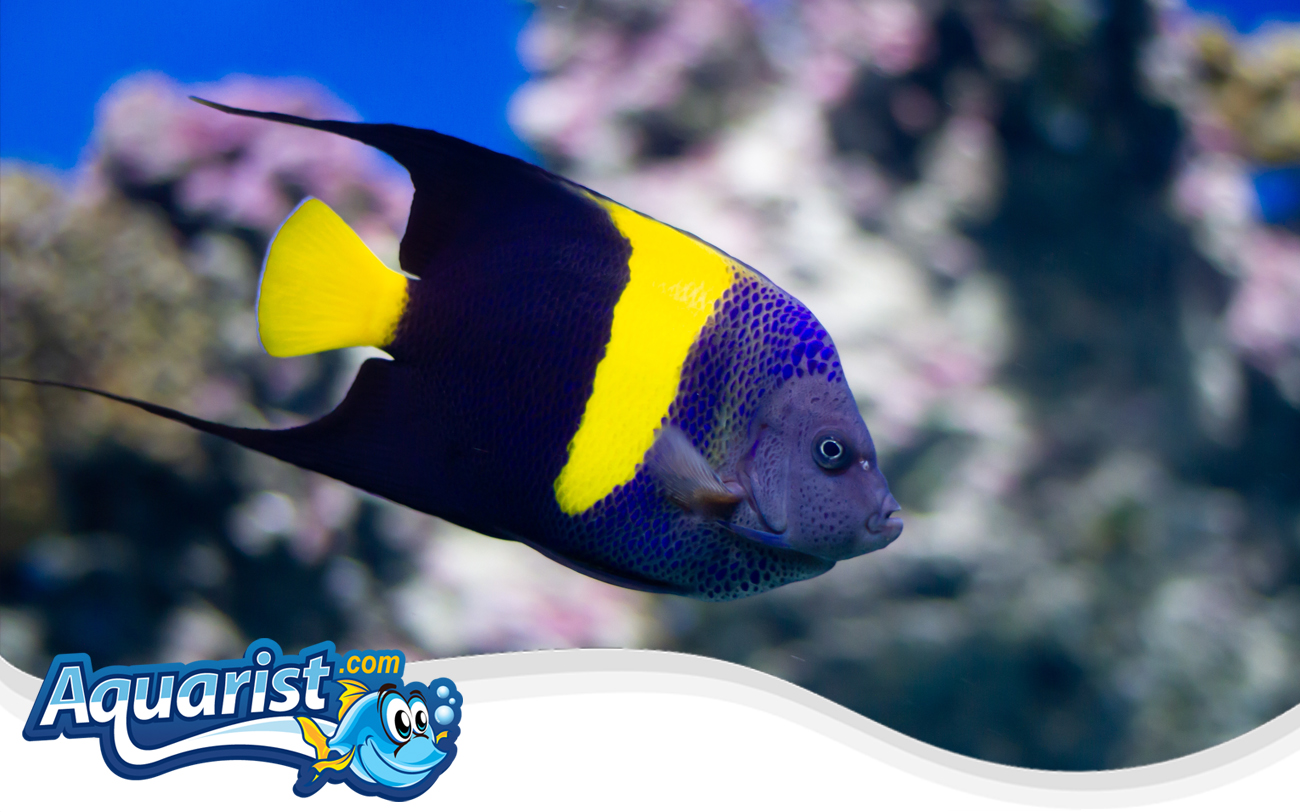Overview
- Native to the Red Sea and western Indian Ocean, commonly inhabiting coral reefs and rocky reef slopes.
- Recognizable by its striking coloration: a deep blue-black body with a bold vertical yellow band and yellow tail fin.
- Juveniles display a unique coloration of dark blue with thin vertical white stripes.
- Known to exhibit territorial behavior and active personality in aquarium settings.
Feeding
- Primarily omnivorous; natural diet consists of algae, sponges, tunicates, corals, and small invertebrates.
- Accepts varied foods in aquariums, including angelfish-specific diets, marine algae, mysis shrimp, brine shrimp, and finely chopped seafood.
- Requires multiple daily feedings to ensure optimal health and coloration.
- Sponge and algae-based supplements are essential for nutritional balance.
Habitat
- Needs a spacious aquarium (minimum 180 gallons) with plenty of swimming space and live rock structures for territory and shelter.
- Thrives best in a mature and stable aquarium environment.
- Live rock structures providing hiding spaces and territories are essential.
- Requires strong filtration and moderate water circulation for optimal health.
Fish Care
- Ideal water temperature: 74-79°F (23-26°C).
- Recommended pH: 8.1-8.4; specific gravity: 1.020-1.025.
- Sensitive to poor water quality; regular water testing and frequent water changes necessary.
- Prone to marine parasites; vigilant monitoring and proactive care are important.
Compatibility
- Semi-aggressive; best housed with similarly sized and temperament-compatible fish.
- Territorial towards other angelfish or similarly shaped and colored species.
- Not reef-safe; likely to nip at corals, sponges, and ornamental invertebrates.
- Suitable companions include large tangs, groupers, wrasses, and other robust marine species.
Aquarium Behavior
- Active swimmer and displays assertive territorial behavior.
- Juveniles are shy initially but become bolder and more assertive with age.
- Often interactive, especially during feeding times, recognizing caretakers readily.
- Providing adequate hiding places and enrichment can significantly reduce stress and aggression.


